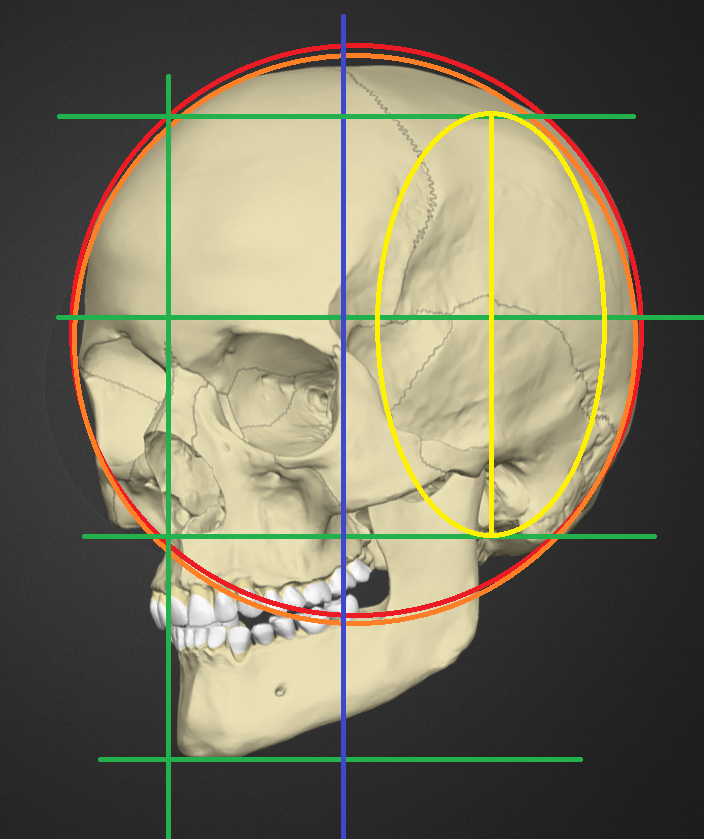Introduction
Hello! This is the third post of my Supplementary series where I do my best to research and address certain issues I have found with different art instructional/educational methods. I then post my conclusions and findings in this series to hopefully help others who are having the same issues resolve them and move on from them.
For context, I personally, started drawing with the book Drawing on The Right Side of The Brain and the Loomis books, years and years ago in Secondary School. My start in art and the subsequent journey is arguably not too natural and guided by instructional books, and I have read a lot of them and struggled with them and grew with them.
My initial article on Loomis, “The Uninformed Problem of The Loomis Method”, where I talked about one of the method’s problems (the seemingly mathematical approach to the ideal proportions and the sudden non-mathematical approach to finding the sides of the cranium), is the most viewed article on this website.
If you google “Loomis Problem” or “Loomis Method Problem”, it is also the first result on Google, hence the traffic to it. It is responsible for 99% of the views this website gets.
I believe that the viewership, which was all purely from Google search terms leading to that article, and even the comment I had on the article asking me about alternatives to the method or solutions warrant further researching and the creation of the Supplementary series to help people.
I meant this to be started as video series but I hope that I get additional feedback here to see what other issues there are or if my solutions do not answer their questions so I can research and improve further before making a video series. So please do comment with your feedback.
Part One: Conclusion Topics Found
Like the previous one I will show the conclusions I have reached but for a further understanding of these topics, you will need to donate a one time fee to see the evidence that I have gathered to support these conclusions.
A lot of the same conclusion topics from the first Supplementary apply here,however in this entry addressing 3/4 views, we start to have a lot of different variations on that axis and a lot more topics to settle and consider.
A) What Exactly Is A 3/4 View? Using Increments and The Isosceles Triangle
B) Loomis Has Unintentional Inconsistencies From Step to Step
C) The Cut Off Sides Helps In The 3/4 View…Somewhat
D) Breaking Down The View Of The Head Into Increments
E) Breaking Down The Perspective Of The Sides-Ellipses Into Increments
F) Adding A Little At The Back? It Depends…
G) The Loomis Method Was Meant To Be Changed Accordingly To What You Need, Not Followed Too Closely, Loomis Did This Himself
H) Real-life Observation Supersedes/Informs Constructional Methods To Conform To What You Observe (For Observational Drawing From Reference)
I) Anatomical Knowledge (Bone And Muscle) And Knowledge of The Planes (Asaro) and Rhythms (Reilly) Supersedes/Informs Construction Methods, (For Drawing From Imagination)
J) Not Everyone Uses The Loomis Method, No Matter How Recommended The Books Are
At this point I want to also address another issue, I wish to put the rest of the article under a pay for view chapter (if I actually made it work). I take a lot of effort into writing the issues I write about and I want to be able to make some money for my trouble, it costs a one time payment of 3USD to view the rest of this article. If you wish there are other free articles to read below.
Donate to Get Access
Read more of this content when you donate today.
Conclusion
In closing, that has been my third Supplementary post on the Loomis method, the next would be how to draw people of different races, and how to draw more different angles. Then I will compile all of it into a PDF with additional resources and pictures and sell it as a single PDF on my gumroad page!
If you liked what you read, please consider supporting me on Patreon (monthly) or ko-fi (one time donations.
Please browse my Gumroad, my Redbubble and my Youtube Channel as well.
Keep Creating~!
JR

